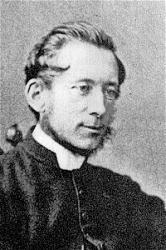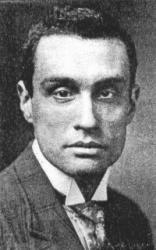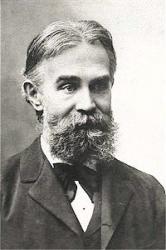Planning worship?
Check out our sister site, ZeteoSearch.org,
for 20+ additional resources related to your search.
- |
User Links
Search Results
Bring, O morn, thy music! bring, O night, thy silence!
Author: William C. Gannett Appears in 37 hymnals Used With Tune: NICAEA
Bring, O morn, thy music! bring, O night, thy silence!
Bring, O Morn, Thy Music
Author: William C. Gannett, 1840-1923 Hymnal: Hymns for a Pilgrim People #29 (2007) Meter: 12.13.12.10 First Line: Bring, O morn, thy music! Bring, O night thy silence! Lyrics: 1 Bring, O morn, thy music! Bring, O night, thy silence!
Ocean, chant the rapture to the storm-wind coursing free!
Sun and stars are singing, Thou art our Creator,
Who wert and art and evermore shalt be.
2 Life and death, Thy creatures, praise Thee, Mighty Giver;
Praise and prayer are rising in Thy beast and bird and tree;
Lo! they praise and vanish, vanish at Thy bidding,
Who wert and art and evermore shalt be.
3 Light us, lead us! love us! cry Thy groping nations,
Pleading in the thousand tongues and naming only Thee,
Weaving blindly out Thy holy, happy purpose,
Who wert and art and evermore shalt be.
4 Life nor death can part us, O Thou Love eternal,
Shepherd of the wand'ring star, and souls that wayward flee;
Homeward draws our spirit to Thy Spirit yearning,
Who wert and art and evermore shalt be.
Amen. Topics: Adoration and Praise; Creation; God the Father Scripture: Psalm 66:4 Languages: English Tune Title: NICEA
Bring, O Morn, Thy Music
Bring, O Morn, Thy Music
Author: William Channing Gannett, 1840-1923 Hymnal: Singing the Living Tradition #39 (1993) Meter: 12.13.12.10 First Line: Bring, O morn, thy music! Night, thy starlit silence! Lyrics: 1 Bring, O morn, thy music! Night, thy starlit silence!
Oceans, laugh in rapture to the storm-winds coursing free!
Sun and planets chorus, praise to Thee, Most Holy –
Who was, and is, and evermore shall be.
2 Life and death, thy creatures, praise thee, mighty Giver!
Praise and prayer are rising in thy beast and bird and tree;
Lo! they praise and vanish, vanish at thy bidding –
Who was, and is, and evermore shall be.
3 Life nor death can part us, O thou Love eternal,
Shepherd of the wandering star and souls that wayward flee!
Homeward draws the spirit to thy Spirit yearning –
Who was, and is, and evermore shall be. Topics: Transcending Mystery and Wonder Morning; Celebration and Praise; God, Goddess, and Spirit; Nature and the Countryside Languages: English Tune Title: NICAEA
Bring, O Morn, Thy Music
Bring, O Morn, Thy Music
Author: William C. Gannett Hymnal: The Cyber Hymnal #602 Meter: 11.12.12.10 First Line: Bring, O morn, thy music! Night, thy starlit silence Lyrics: 1. Bring, O morn, thy music! Night, thy starlit silence!
Oceans, laugh the rapture to the storm winds coursing free!
Suns and planets chorus, Thou art our Creator,
Who wert, and art, and evermore shalt be!
2. Life and death, Thy creatures, praise Thee, mighty Giver!
Praise and prayer are rising in Thy beast and bird and tree:
Lo! they praise and vanish, vanish at Thy bidding,
Who wert, and art, and evermore shalt be!
3. Light us! lead us! love us! cry Thy groping nations,
Pleading in the thousand tongues, but naming only Thee,
Weaving blindly out Thy holy, happy purpose,
Who wert, and art, and evermore shalt be!
4. Life nor death can part us, O Thou Love eternal,
Shepherd of the wandering star and souls that wayward flee!
Homeward draws the spirit to Thy Spirit yearning,
Who wert, and art, and evermore shalt be! Languages: English Tune Title: NICAEA
Bring, O Morn, Thy Music
John Bacchus Dykes

1823 - 1876 Person Name: John B. Dykes, 1823-1876 Composer of "NICEA" in Hymns for a Pilgrim People As a young child John Bacchus Dykes (b. Kingston-upon-Hull' England, 1823; d. Ticehurst, Sussex, England, 1876) took violin and piano lessons. At the age of ten he became the organist of St. John's in Hull, where his grandfather was vicar. After receiving a classics degree from St. Catherine College, Cambridge, England, he was ordained in the Church of England in 1847. In 1849 he became the precentor and choir director at Durham Cathedral, where he introduced reforms in the choir by insisting on consistent attendance, increasing rehearsals, and initiating music festivals. He served the parish of St. Oswald in Durham from 1862 until the year of his death. To the chagrin of his bishop, Dykes favored the high church practices associated with the Oxford Movement (choir robes, incense, and the like). A number of his three hundred hymn tunes are still respected as durable examples of Victorian hymnody. Most of his tunes were first published in Chope's Congregational Hymn and Tune Book (1857) and in early editions of the famous British hymnal, Hymns Ancient and Modern.
Bert Polman
John Bacchus Dykes
Thoro Harris

1874 - 1955 Composer of "[Bring, O morn, thy music]" in Songs of Redemption Born: March 31, 1874, Washington, DC.
Died: March 27, 1955, Eureka Springs, Arkansas.
Buried: International Order of Odd Fellows Cemetery, Eureka Springs, Arkansas.
After attending college in Battle Creek, Michigan, Harris produced his first hymnal in Boston, Massachusetts, in 1902. He then moved to Chicago, Illinois at the invitation of Peter Bilhorn, and in 1932, to Eureka Springs, Arkansas. He composed and compiled a number of works, and was well known locally as he walked around with a canvas bag full of handbooks for sale. His works include:
Light and Life Songs, with William Olmstead & William Kirkpatrick (Chicago, Illinois: S. K. J. Chesbro, 1904)
Little Branches, with George J. Meyer & Howard E. Smith (Chicago, Illinois: Meyer & Brother, 1906)
Best Temperance Songs (Chicago, Illinois: The Glad Tidings Publishing Company, 1913) (music editor)
Hymns of Hope (Chicago, Illinois: Thoro Harris, undated, circa 1922)
--www.hymntime.com/tch
Thoro Harris
William Channing Gannett

1840 - 1923 Person Name: William C. Gannett, 1840-1923 Author of "Bring, O Morn, Thy Music" in Hymns for a Pilgrim People Gannett, William Channing, M.A., s. of Dr. Ezra Stiles Gannett, was b. at Boston, March 13, 1840, and educated at Harvard College, 1860, and the Divinity School, Cambridge. Entered the Unitarian Ministry in 1868, and after filling several pastorates he became Pastor of the Unitarian Church at Rochester, N.Y., 1889. Mr. Gannett's hymns, mainly written for special occasions, were included in great part in The Thought of God in Hymns and Poems, Boston, 1st Series 1885,2nd Series 1894,
the combined production of F. L. Hosmer (q.v.) and himself. Of Mr. Gannett's hymns the following are in common use:—
1. Bring, 0 morn, thy music [God Everlasting.] Written in 1893, and printed in A Chorus of Faith, being an account and resume of the Parliament of Religions, held in Chicago, 1893. Included in The Thought of God, 2nd Series, 1894, and again in several hymnals.
2. Clear in memory's silent reaches. [Memory.] Written in 1877 for a Free Religious Assoc. Festival, and published in The Thought of God, 1st Series, 1885.
3. Prom heart to heart, from creed to creed. [Faith.] Written in 1875 for the 150th anniversary of the First Religious Society in Newburyport, and given in The Thought of God, 1ist Series, 1885. Usually st. ii. is omitted.
4. He hides within the lily. [Divine Providence.] "Consider the lilies, how they grow." Written in 1873, and printed for use at the Free Religious Assoc. Festival, May 30th, 1873. Published in The Thought of God, &c, 1st Series, 1885, in 4 stanzas of 8 lines. The most widely used of the author's hymns.
5. I hear it often in the dark. [The Voice of God.] Written at Milwaukee, in 1870, and published in The Thought of God, &c, 1st Series, 1885. Sometimes it begins with st. iii., "0 God within, so close to me," as in Hymns for Church and Home, Boston, 1895.
6. Praise to God and thanksgiving. [ Harvest.] Written in 1872 for a Harvest Festival at St. Paul's, Minn., of which he was then Pastor, and included in The Thought of God &c, 1st Series, 1885. in the Boston Pilgrim Hymnal, 1904, it begins "Praise to God, and thanks we bring."
7. Sleep, my little Jesus. [ Christmas Carol.] Written for the Sunday School, St. Paul's, Minn., in 1882, and given in The Thought of God, 2nd Series, 1894, as "Mary's Manger Song."
8. The Lord is in His holy place. [Dedication of a Place of Worship.] Written for the Dedication of the Rev. C. W. Wendte's Church, Chicago, April 24, 1873, and pub. in The Thought of God, &c, 1st Series, 1885. It is one of the most popular and widely used of the author's hymns.
9. The morning hangs its signal. [Morning.] This is dated by the author "Chicago, July 30, 1886," and printed in Love to God and Love to Man, being No. 28 ot the Chicago "Unity Mission" series of hymns (N.D.). Also included in The Thought of God, &c, 2nd Series, 1894. Although in some sense a Morning hymn, it is adapted for use in Advent. It is usually known as “The Crowning Day."
10. The Truth is the Voice of God. In the "Unity Mission" Series, No. 28 (see above), this is given as No. 33, with the title "Truth and Righteousness and Love," in 4 stanzas of 4 lines and a refrain of 4 lines.
These annotations are based upon manuscript notes kindly supplied by the author. The use made of Mr. Gannett's hymns shows that their poetic beauty and loving sympathy with all things beautiful and pure, are widely appreciated in America and to a limited extent in Great Britain also.
--John Julian, Dictionary of Hymnology, New Supplement (1907)
William Channing Gannett


 My Starred Hymns
My Starred Hymns

